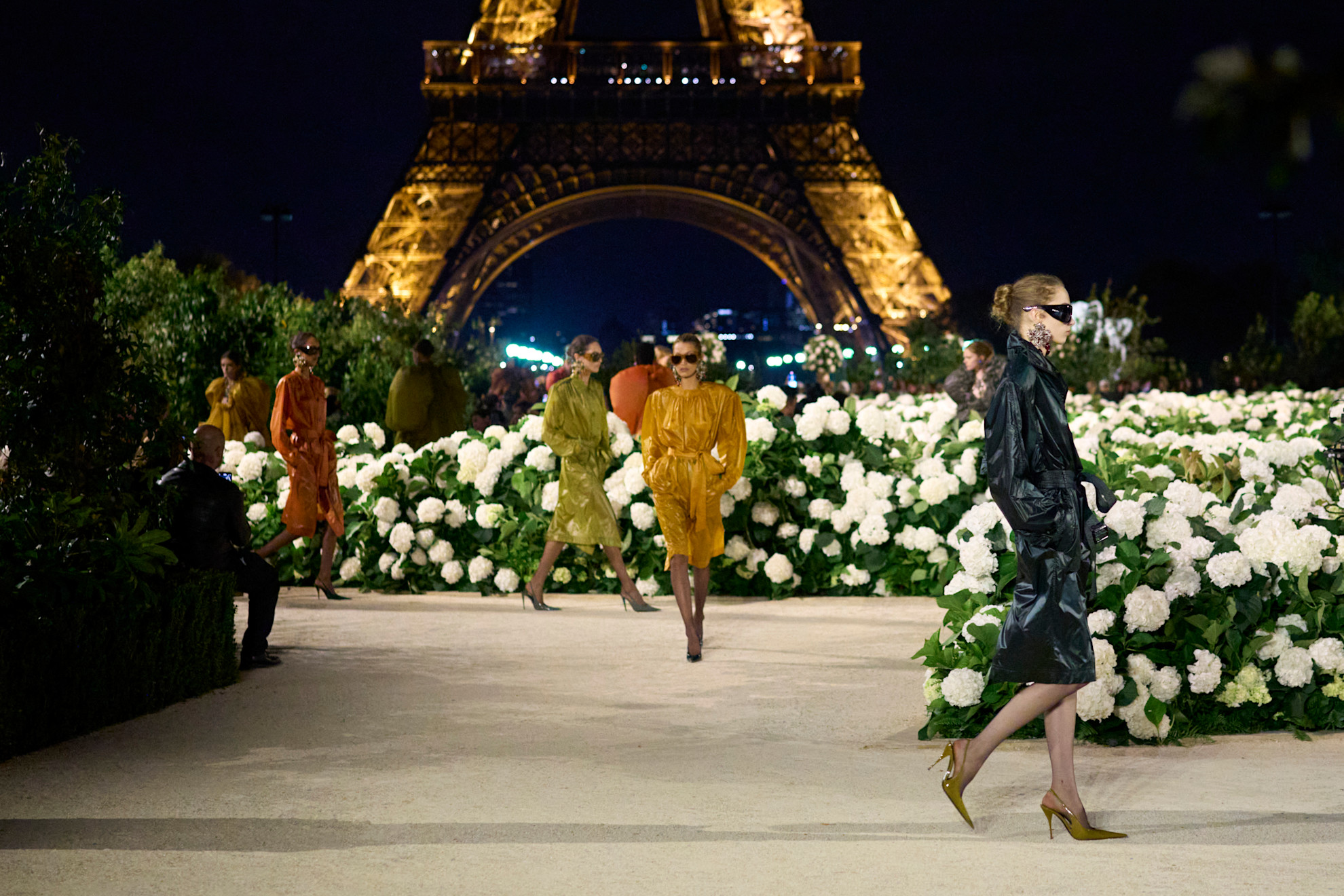Gucci and direct retail show signs of stabilizing amid broader group-wide declines; de Meo accelerates restructuring.
Key Takeaways
- Debt and brand reset: CEO Luca de Meo emphasizes capital reallocation, cost reduction, and strategic brand repositioning.
- Q3 revenue: €3.42 billion, down 10% as reported and 5% on a comparable basis.
- Sequential improvement: Group performance improved notably from Q2’s -15% organic decline.
- Gucci decline moderates: Organic sales down 14%, compared to -25% in Q2.
- Strongest performers: Bottega Veneta (+3%) and Kering Eyewear (+6%) posted gains.
- L’Oréal deal: Kering will sell its beauty division for €4B, while retaining long-term brand licenses.
Gucci
Gucci generated €1.3 billion in Q3, with organic sales down 14% and reported sales down 18%. While still in decline, the numbers signal material progress from Q2’s 25% drop. Retail sales fell 13% organically, buoyed by stronger momentum in North America and Western Europe, along with renewed traction in leather goods. Wholesale, however, remained weak with a 25% drop. The house closed the quarter with the debut of Sabato De Sarno’s “Ancora”-era follow-up collection, La Famiglia, which was met with cautious optimism as Gucci reasserts its creative identity.
Saint Laurent
Saint Laurent posted €620 million in sales, down 4% on a comparable basis. Retail dropped just 2%, aided by a return to growth in North America and strong reception for ready-to-wear and footwear. The leather goods refresh is still underway, with early signs of progress. Wholesale declined 16%, reflecting a continued pullback as part of the brand’s distribution rationalization strategy.
Bottega Veneta
Bottega Veneta continued its quiet ascent, reaching €393 million in Q3 revenues with 3% growth on a comparable basis and 5% growth in direct retail. North America delivered double-digit gains, and standout growth came from ready-to-wear and footwear. The newly launched Campana bag showed early success, positioning the house well for a category push heading into 2026. Wholesale was down 9%, offset by retail strength.
Other Houses
The “Other Maisons” division—which includes Balenciaga, Alexander McQueen, Brioni, and the jewelry houses—grew 1% on a comparable basis to €652 million. Direct retail was flat, but wholesale rose 5%.
- Balenciaga stabilized across categories, particularly in North America.
- Alexander McQueen narrowed its decline, thanks in part to women’s ready-to-wear.
- Brioni continued its return to form, led by strong performance in Europe, North America, and Japan.
- Jewelry brands (Boucheron, Pomellato, Qeelin) stood out, with double-digit growth—Boucheron in the U.S. and Asia-Pacific, and Qeelin maintaining its momentum in China.
Kering Eyewear and Corporate
This segment generated €448 million in Q3, up 6% on a comparable basis. Kering Eyewear grew 7%, with strong performance across all regions and brands, particularly Maui Jim and Lindberg. The new partnership with Valentino, set to launch in Spring/Summer 2026, positions the division for further growth. Kering Beauté rose 3%, supported by launches like Balenciaga’s first fragrance and Creed’s Oud Zarian.
Strategic Update
Kering’s third-quarter performance, while showing a clear sequential improvement, remains below that of the market. This reinforces my determination to act at all levels of the company to restore our Houses and Kering to the position they deserve. We are working tirelessly on our recovery, as evidenced by our recent decisions.
– Luca de Meo, Chief Executive Officer
CEO Luca de Meo, who officially took office in mid-September, is moving quickly. His leadership has already seen the appointment of Francesca Bellettini as President and CEO of Gucci, the postponement of the Valentino acquisition, and the announcement of the €4 billion Kering Beauté sale to L’Oréal—moves aimed at reducing debt, streamlining operations, and refocusing on core houses.
De Meo emphasized that while Q3 showed signs of progress, the group still lags peers. A more detailed strategic roadmap is expected in spring 2026, but near-term priorities include rationalizing costs, reallocating capital, and rebuilding investor confidence. As he put it, “We obviously have to try to get some mojo back with the market.”
